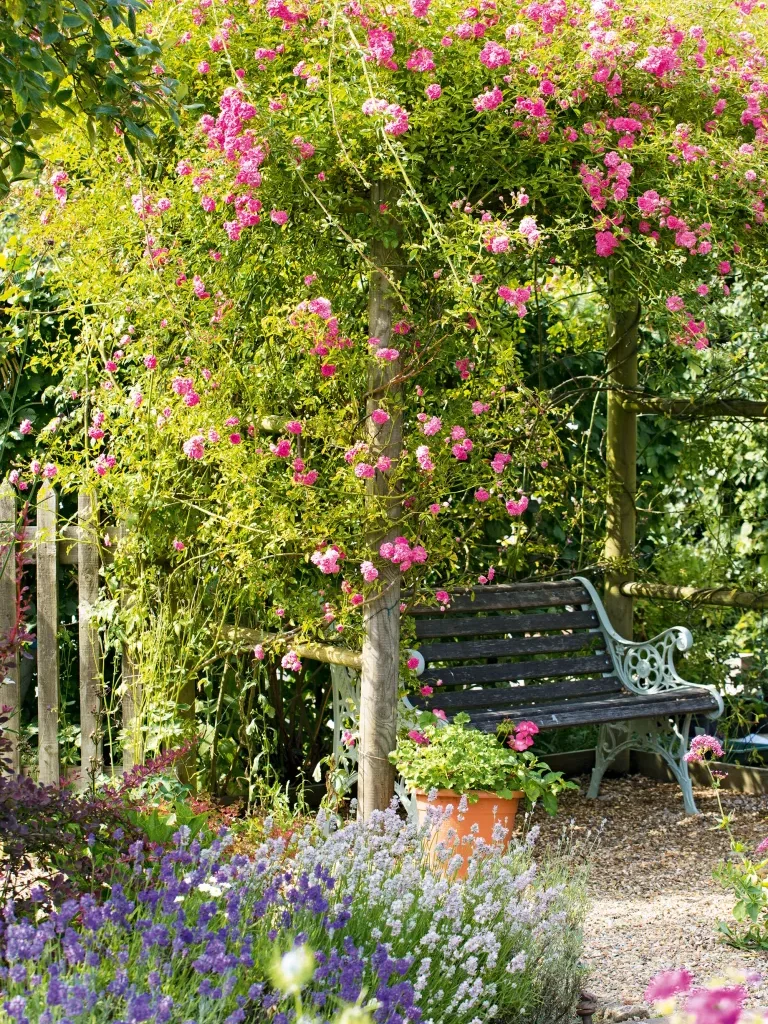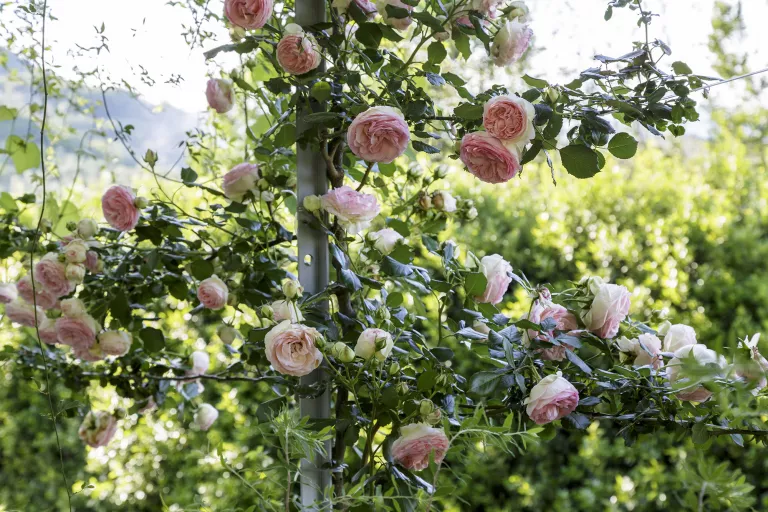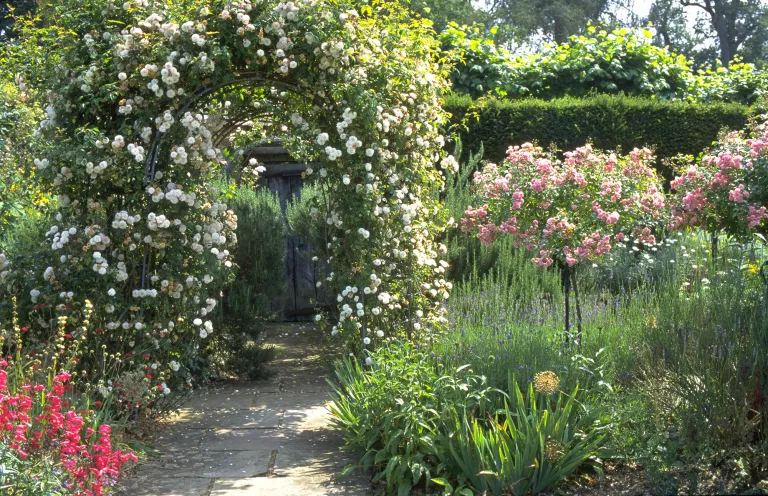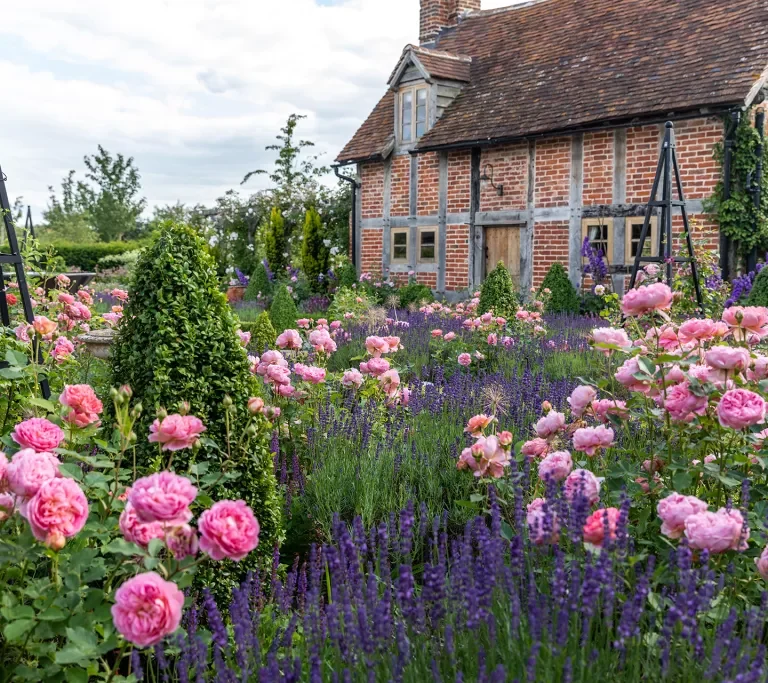How to prune climbing roses – for maximum flowers
It’s essential to learn how to prune climbing roses if you want to keep these beautiful plants healthy and help them reach their full flowering potential.
Climbing roses are among the most evocative, romantic plants because of their beautiful aroma and flouncy flowers, and they ought to take center stage in any rose garden design.
An essential part of caring for roses is knowing the proper pruning techniques. To help them reach the appropriate height and spread, climbing roses must care for differently than shrub roses.
According to Kristen Smith, new plants coordinator, and rose product manager at Star Roses and Plants, climbing roses need to be pruned regularly to maintain the rose plant’s general health and to promote great vigor, form, and flower production.
Understanding the proper method for deadheading roses will promote additional blossoming shoots.
Remember that climbing roses need to establish and develop strong roots in the first few years after planting, so be kind to them.
The method for pruning rambling roses must also be slightly different. So before grabbing the pruners, be sure to know what kind of rose you have.

HOW TO PRUNE CLIMBING ROSES – EXPERT GUIDE
Climbing roses are tough plants despite their fragile appearance, so that you can prune them with confidence.
Even if you give them a severe cutback, they should bounce back; this is required to repair a climbing rose.
But if you want to form them beautifully and get the most flowers, do it the right way.
WHEN TO PRUNE CLIMBING ROSES
Climbing and shrub roses should both be pruned at the same time.
Climbing roses should be pruned in late winter or early spring, just as the leaf buds are starting to expand and grow, advises Smith.
Knowing when to prune climbing roses is crucial because if you do it too early in the winter, you risk exposing the plant to frost damage.
Richard Austin, son of famed rose grower David Austin, notes, “it can also be more difficult to recognize the less healthy stems that you will want to prune out.”
If you wait too long to prune your roses, you may have to cut back on new growth. According to Austin, “it is better to prune if you still haven’t done so by March.”

WHAT YOU NEED
When climbing roses have reached full maturity, pruning them is a labor-intensive, hands-on process.
Your safety comes first. Like planting roses, you’ll need sturdy gardening gloves to protect your hands from thorns, which can create painful cuts and spread harmful bacteria. Protect your lower arms and hands with leather gauntlets. Protect yourself from scrapes and rips by donning denim or another sturdy fabric.
Use antibacterial spray on any cuts you sustain right away.
Then, invest in a high-quality set of pruners. These should be razor sharp; if you don’t have access to a sharpening service, see if you can get a sharpening stone or diamond sharpener and do it yourself.
To prevent the spread of illness, you should clean your instruments between each rose you prune.
Remember that pruners can only be used on live, green rose stems; for deadwood and larger branches, use loppers or a hand saw.
1. IDENTIFY THE MAIN STEMS
To correctly prune a climbing rose, you must determine which stems will serve as the plant’s pillars. Cut cutting them because they support the plant as it climbs.
According to Smith, once the rose has formed strong main canes, you should pick the best 4-6 and prune out any competing canes that cross over one another, are small and spindly, or are growing in the opposite direction of how you want to train the rose.
Prune any canes that look unhealthy or have been damaged throughout the winter.
Remove any too frail stems to support the blossoms once summer arrives.
At the end of the third or fourth year, take out one of the oldest stems near the base of the rose. It will stimulate new growth at ground level.
Smith explains that when the main canes get old, thick, and woody, it is advisable to remove them and begin training younger, more supple new main canes. The removed older canes should be pruned as close to the base as feasible.

2. PRUNE THE SIDE SHOOTS
Your pruning efforts should be concentrated on the numerous lateral branches that sprout from each main stem.
Austin recommends leaving around 2-3 inches of the main stem intact after cutting back the side shoots. Aim for leaving 2–3 nodes, also known as bud eyes, on each stem.
If a tree has lateral branches developing downwards or outwards, Smith says to cut them off.
To prevent the transmission of disease, it is essential to remove all foliage when you prune but not to compost the leaves.
3. HOW TO TRAIN CLIMBING ROSES
Smith recommends “training your climbing rose” by tying up the canes at a 45-degree angle or nearly horizontally. Most flowering will occur on the lateral branches that emerge from these canes.
Great trellis designs may be found online to assist in rose training. Alternatively, you can attach the wires inconspicuously to the wall or fence or train the climbing rose to climb over a pergola or other garden structure. Avoid damaging the stems by just using gentle ties.
Learning to prune climbing roses and train them up a wall or over a structure requires practice as a visual activity. Instead of just trimming all the shoots to a predetermined length, look at the area you are trying to cover and decide how to get the best shape from your climbing rose.
Tony Hall, author of The Kew Gardener’s Guide to Growing Roses, advises, “Have a close look at your rose and picture what you want it to do.”
‘Does it need training in a certain direction, or more than one way, to construct and build your framework? Then secure the stems in their designated locations.
If the stems are excessively long, trim them down to size or, if they are flexible, reposition them by tying them in place.

4. FEED AND MULCH YOUR ROSE
After you’ve pruned, your climbing rose, feed it a feeding of rose product. Check the package directions, although climbing roses usually require a higher dose of feed than shrub roses.
Incorporate the rose feed into the soil around your rose, but keep it away from the product’s main stems.
Compost or well-rotted manure applied as a mulch around your roses at the end of the process will add extra nutrients, prevent weeds and illness, and retain moisture. Spread it to 3 to 6 inches, covering the ground directly under the rose arbor.
Getting rid of weeds or dead plants before applying mulch is essential.
HOW DO YOU PRUNE A NEW CLIMBING ROSE?
Be gentle while pruning fresh climbing roses; heavy cuts could stunt the plant’s development.
Smith advises the first three years after planting a climbing rose to be unpruned so the plant can leave sturdy main canes. “During the first few years, only prune out dead, diseased, or broken canes.”
The production of flowers can be stimulated by regularly deadheading the plants.
Leave the main stems alone, but trim the side shoots by up to a third if you feel the need to prune your climbing rose in its young years. Extra-long side shoots can be trimmed to the same length as the others.
Clear away vegetation to prevent dormancy of disease.

PRUNING RAMBLING ROSES
Solid for covering huge areas, rambling roses spread rapidly as they climb. Although there are exceptions, most climbing roses only bloom once, while others provide a beautiful display throughout the summer.
Pruning rambling roses regularly is essential, as they may quickly become out of the top, resulting in a tangled mess of branches and no blossoms.
In contrast to other roses, rambling roses need to be pruned soon after flowering so they can start growing new wood and blooming the next spring again. The growing year is not fertile for blooming rambling roses.
According to horticulture guru Matt James, “in summer prune rambling roses after flowering – unless they are repeat-flowering kinds.”
Shoots on offshoots should be pruned back to two buds on the main stems. Remove the same amount of older, lower-growing shoots as you’re tying in old, vigorous ones.
All roses, including rambling ones, are trained and fed the same way.
HOW TO TRAIN A CLIMBING ROSE OVER AN ARCH
The proper form must be maintained while pruning climbing roses so that they can be trained over an arch or other garden structure.
Remove any infected, broken, or dead branches, and choose the strongest roses to work with while training your climbing rose, just like any other type of rose.
You may train the main stems to arch over by gently twisting and weaving the shoots around the archway.
Cut off at their roots any stems that refuse to grow in the intended direction.

HOW TO PRUNE CLIMBING ROSES FOR WINTER
Climbing roses should not be pruned before winter because doing so could make them more susceptible to frost damage.
Branches must only be pruned back if they are broken due to storm damage.
If you don’t want to prune your climbing roses in the dead of winter, wait till then.
HOW TO PRUNE CLIMBING ROSES IN SUMMER
Summer is not the time to prune climbing roses, but you can give them a small cut if they’re getting unruly. You might get one more flowering round if you time this just right.
Only rambling roses, however, require summer pruning just after flowering. Doing so can ensure that fresh wood will grow to support flowers the following year.
DO YOU CUT BACK CLIMBING ROSES EACH YEAR?
Unless there are problems with the plant and it needs renovation, established climbing roses don’t benefit from severe pruning each year.
To achieve your goal of covering a surface or building, you need the main stems to grow tall, and pruning them back will prevent this from happening.
You can, however, cut the side shoots annually to stimulate more flower growth.







